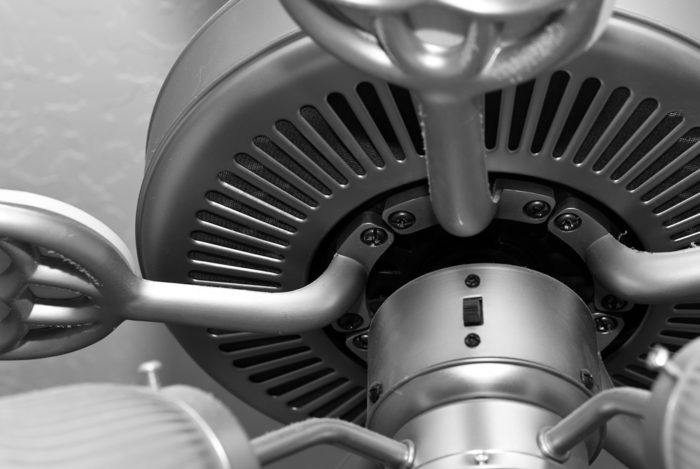
Image Credit: JH Photography / Creative Commons license / Flickr
Late last month, the Department of Energy (DOE) issued two rules affecting ceiling fans: a proposed rule that would establish the first efficiency standards for ceiling fans, and a final rule that improves the efficiency of the lights attached to ceiling fans.
The proposed ceiling fan efficiency standards would save about 11% of the energy used by ceiling fans. Energy savings would more than double, though, if DOE adopted a standard level based on advanced motor technology for residential ceiling fans.
Ceiling fans meeting the proposed new standards sold over 30 years would reduce national electricity consumption by about 80 billion kilowatt-hours, an amount equal to the annual energy consumption of over 7 million U.S. households, and would net savings of $0.8 to $2.8 billion for purchasers.
Most residential ceiling fans are sold with light kits, which are required to come packaged with light bulbs. DOE’s final rule revising the existing energy efficiency standard for ceiling fan light kits will reduce the amount of energy used by ceiling fan lights by 3.6%, and will come into effect in early 2019.
Over the next 30 years, ceiling fan light kits meeting the new standards will reduce national electricity consumption by about 14.4 million kilowatt-hours, equivalent to the annual average electricity consumed by 1.4 million homes. These savings will be worth $500 to $660 million to purchasers.
Ceiling fans are widely used
About 80 million U.S. households use at least one ceiling fan, and a quarter of all households use four or more ceiling fans. The standards issued today would cover both ceiling fans used in homes as well as ceiling fans that provide higher airflows for use in commercial and industrial applications.
There is a huge spread in the efficiencies of currently available ceiling fans. For example, just within ceiling fans that meet the current Energy Star specification, at high speed the most efficient fans are more than five times more efficient than the least efficient models.
The Energy Policy Act of 2005 (EPAct) established prescriptive standards for ceiling fans, requiring, for example, that they have adjustable speed controls. However, there are currently no performance standards for ceiling fans. The new proposed standards would require minimum energy efficiency levels, expressed as airflow delivered (in cubic feet per minute) per unit of power consumption (in watts).
According to data published with the proposed rule, standard residential ceiling fans complying with the proposed rule would cut consumers’ electricity costs to operate fans by about 40% compared with the least efficient fans on the market. DOE estimates that the purchase price would increase by only about $12 with the proposed standards, and that that additional cost would be covered by energy bill savings within 2 years.
The efficiency of ceiling fans can be improved by using more efficient motors and fan blades and by optimizing the fan design, such as by adjusting the blade pitch.
Brushless motors for commercial, not residential, fans
During the rule-making process, some manufacturers objected to a potential standard based on brushless DC motors, which can reduce power consumption by about 60%. The proposed standards issued today for residential ceiling fans could be met using more efficient conventional induction motors that can reduce power consumption by about 10%. Although DOE did not propose standards based on brushless DC motors for residential ceiling fans, the large savings they deliver could provide the basis for an updated Energy Star specification. The proposed performance standard levels for fans designed for commercial and industrial applications are based on advanced brushless DC motors.
Most ceiling fans have flat blades, although some have “unconventional” blades, such as blades in the shape of a palm leaf, which are generally less efficient than flat blades. In response to some manufacturers’ concerns, the efficiency levels evaluated for the proposed rule can all be met by flat blade fans as well as unconventional blade fans. In addition, today’s proposed rule would exempt “highly decorative” ceiling fans, which would be defined as fans incapable of spinning at high speeds or moving very much air.
Final rule on light kits
In its final rule on ceiling fan light kits, DOE closed a loophole which had allowed light bulbs with smaller bases to meet a less demanding standard. DOE decided not to require a level of energy efficiency that can currently only be met by Light Emitting Diode (LED) lamps, despite the fact that its own analysis showed that doing so would yield greater net benefits to purchasers than the lower efficiency level that was eventually chosen for the standard. The revised ceiling fan light kit standard will require CFLs or LEDs used to meet a slightly higher efficiency level than under the previous standard, preserving a wide range of choices for ceiling fan light kit buyers.
The final rule for ceiling fan efficiency is due by July 2016, and the new standards would take effect three years later.
Andrew deLaski is the executive director of the Appliance Standards Awareness Project. Joanna Mauer and Chris Granda of ASAP also contributed to this post, which was originally published at the website of the American Council for an Energy-Efficient Economy.
Weekly Newsletter
Get building science and energy efficiency advice, plus special offers, in your inbox.





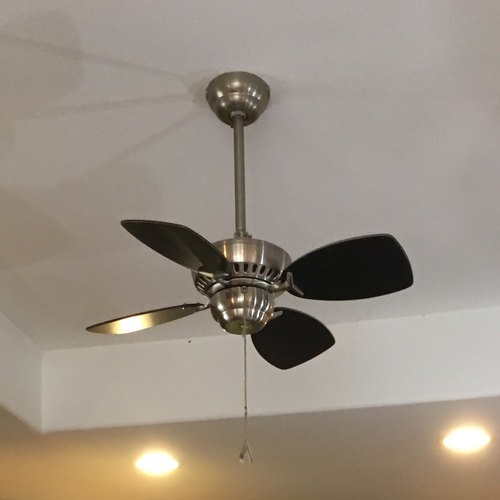
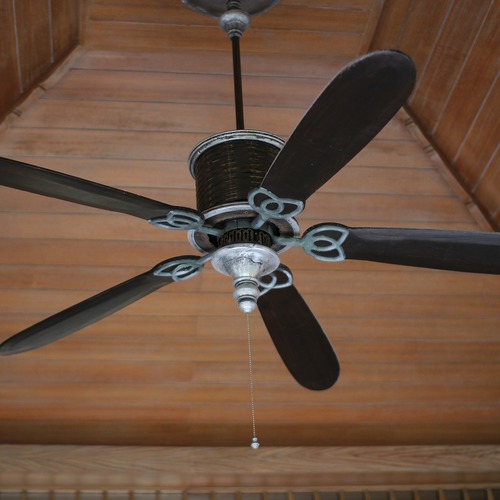
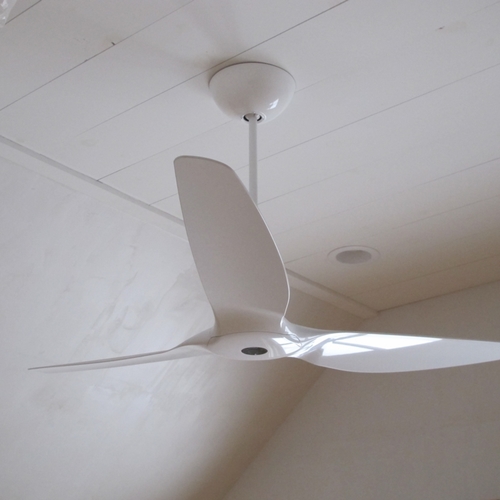
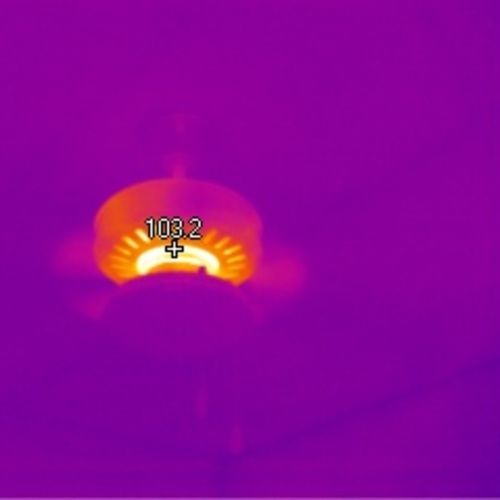






4 Comments
I suppose vacancy sensors won't make it into the regs...
The biggest waste of ceiling fan energy is from being left on when nobody is there. The rest of it is all frosting on the cake.
Occupancy/vacancy sensors turning the thing off (or at least down) if there is no sensed motion for more than some programmed/programmable amount of time would save far more energy than higher efficiency light bulbs or state of the art DC motors.
Using LED lights would save energy
The light kits that come on ceiling fans now are useless to me. My house has no lights in the rooms other than the lights on the ceiling fan. The older I get the more light I need just to be able to see. The new LED lights are fantastic. Providing more light, using less energy (at least that is what I have been led to believe). Is this a true statement? I know, to me at least the LED help me to see better. But is this causing my wallet to get thinner?
Financial efficiency
Frank, everything in our modern world is intended to thin your wallet down. Everything. Including green buildings in general which masquerade as green by reducing the environmental footprint of gigantic houses.
Any improved efficiency in ceiling fans or anything else is welcome. But I think it's important to keep in mind that even the worst ceiling fans can help to reduce heating and cooling demands and return more energy savings than they waste. I will look for the most efficient fan if I should be buying one in the future, but I'm no going to retrofit my existing one. (And no, it is not running when we are out of the room.)
I've been converting to LED lamps over the last few years. Like any new technology they are improving almost daily and costs are going down. But neither the technology nor the cost has reached their plateau yet. So LED lamps do cost more, but use a lot less energy for the same amount of light. They will pay for themselves, but not quickly. And some will die long before their tens of thousands of hours predicted lifespan, becoming quite a bit more expensive.
LED lamps can look almost like conventional incandescent bulbs. But they can also look weird - though not as weird as spiral fluorescents. I recently got some 60 watt equivalent LED bulbs at Home Depot which had the shape of a regular bulb, only they were flattened. Don't know why they thought that was a good idea, but they were on sale for $1.94/each. I wish I'd bought more. They really do seem to put out the same amount and quality of light as a 60 watt incandescent bulb. I replaced a 60w-equivalent spiral fluorescent bulb in a lamp in our bedroom and the LED bulb puts out more light and more pleasant light. I think they had higher watt-equivalence bulbs, too, but the cost is now about $7/each.
If you want a bulb that looks a lot like an incandescent, take a look at the LED filament bulbs. I got one a year ago out of curiosity and was very impressed. They are earlier in their development curve, so cost is higher and reliability is probably worse, though mine has not died yet. I'm watching for them to become price competitive and then that's probably what I'll use in many of the fixtures in my own home.
DOE pandering to mainstream manufacturers
This isn't rocket science. Both LED and BLDC motor technology are well understood and reasonably priced. A 10% improvement in the performance of an extremely inefficient appliance is a laughably low target to set by 2019! Just not close to good enough. Even a 30-50% target would have been easily achievable.
But this wouldn't sit well with the establishment who enjoy a very comfortable margin producing products with technology firmly rooted in the early part of the 20th century. This is not a serious measure, but token effort by only DOE, they had a chance to do something meaningful to reduce carbon emissions but fell well short.
Apart from the costs (which are still in decline and recoverable over time) there should be no argument that the performance, color rendering and lifespan of LED outweigh any negatives. Please don't be fooled in thinking otherwise and update your incandescent and CFL post-haste.
Log in or create an account to post a comment.
Sign up Log in